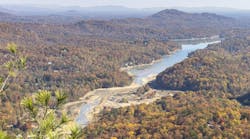About the author: Caitlin Cunningham is editor of Storm Water Solutions. Cunningham can be reached at 847.391.1025 or by e-mail at [email protected].
“Are we to decide the importance of issues by asking how fashionable or glamorous they are? Or by asking how seriously they affect how many?” — Nelson Mandela
While it has been unpleasant to process the news reports, images and video footage illustrating this year’s major flood events, it has not been difficult to find this information. From firsthand accounts of sandbag volunteers and affected homeowners to historical overviews and explanations of the best practices used today, flooding is receiving extensive local and national media coverage. As it should.
The 2011 spring floodwaters that overwhelmed cities all along the Mississippi and Missouri rivers, for example, bring to mind the Nelson Mandela quote presented above. The former leader of South Africa may not have been referring specifically to storm water management and erosion control issues when he posed these questions, but his underlying message resounds in our industry.
Roadways that look more like rivers, mud- and debris-strewn landscapes, and moldy basements are, admittedly, far from “fashionable” and “glamorous.” The work and funding that go into preventing these far-from-desirable circumstances, however, are absolutely essential. Our quality of life—and in severe cases, life itself—depends on storm water management and erosion control awareness, education and action.
A newly released water resources survey from infrastructure firm HNTB Corp. found that 68% of American adults do not consider flooding the most significant natural threat to their home or property, and that 63% do not want to invest more tax dollars in protection measures. Meanwhile, 55% of the same respondent pool indicates that a severe storm, hurricane or flood likely will hit their area in the next five years.
Continued media coverage of flood events and their aftermath—and, perhaps more importantly, greater reporting on the storm water and erosion control issues so often behind them—can do our unprepared public a world of good. Scare tactics are not needed, just fair presentations of the facts and challenges at hand. Armed with this information, the public can decide for itself what the long-term ramifications of these issues might be if we fail to take action.
Download: Here

